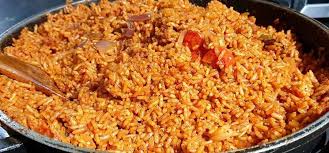In recent years, the world has developed a new craving — and it’s coming straight from the heart of Africa. From the smoky flavours of Ghanaian Jollof rice to the rich stews of Ethiopia and the spicy peri-peri of Mozambique, African cuisine is finally getting the global spotlight it deserves.
A Taste of Africa in Every Corner of the Globe
Walk into a trendy restaurant in London, New York, or Tokyo, and you might just find Suya skewers on the menu or hear someone debating the best version of Jollof rice — Nigerian or Ghanaian. African restaurants, once few and far between in international cities, are now popping up with bold confidence and packed dining rooms.
Chefs of African heritage, like Nigeria’s Michael Elégbèdé or Senegal’s Pierre Thiam, are at the forefront of this movement. They’re not only sharing age-old recipes, but also blending traditional African ingredients with modern cooking techniques. “African food is finally being seen as more than just exotic. It’s being respected as complex, healthy, and delicious,” says Thiam, who now runs restaurants in New York and Dakar.
Jollof Wars and Global Recognition
Jollof rice, the fiery tomato-based rice dish, has become an unofficial ambassador for West African food. The dish, which has sparked friendly rivalries across borders — especially between Nigeria and Ghana — has now gone global. Social media has helped. #JollofWars trends regularly on platforms like Twitter and TikTok, while YouTubers and food bloggers worldwide try their hand at cooking it.
British chef Jamie Oliver famously faced backlash for his version of Jollof, sparking heated discussions but also bringing more attention to the dish. “It was frustrating, but it started a global conversation,” says London-based Nigerian chef Tolu Eros. “And that’s good for African food.”
Beyond the Plate: Culture, History, and Identity
For many Africans in the diaspora, food is more than just nourishment — it’s identity, memory, and connection. Restaurants and pop-ups have become spaces where stories are told through spices and flavours. In cities like Berlin, Toronto, and Melbourne, African food festivals are drawing crowds curious to explore a continent through its meals.
What’s more, African cuisine fits right into today’s food trends. It often uses whole grains, plant-based ingredients, and natural spices — things health-conscious consumers now look for. Dishes like injera (a sour flatbread from Ethiopia), okra stew, and waakye (a Ghanaian rice-and-bean combo) are being recognised for their nutritional value and culinary depth.
The Road Ahead
Still, there’s more ground to cover. African cuisine is vast and diverse — with hundreds of ethnic dishes from over 50 countries. Many remain underrepresented on the world stage. But the tide is turning.
More African-owned restaurants are opening, more cookbooks are being published, and more chefs are proudly flying the flag of their heritage. Streaming platforms like Netflix are featuring African dishes in food documentaries, and global brands are sourcing spices and ingredients directly from African farmers.
As the world develops a taste for Africa’s flavours, one thing is clear: this is not a passing trend. It’s a long-overdue recognition of a continent’s rich culinary legacy. So, whether it’s through a spoonful of Egusi soup or a bite of bunny chow, African food is finding its place at the world’s table — and it’s here to stay.
Have you tried Jollof rice yet? Let your taste buds travel — no passport required.





